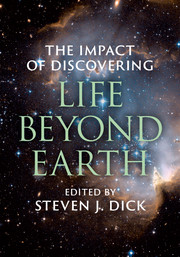Refine listing
Actions for selected content:
17001 results
17 - Plasma Era
- from V - Expansion history
-
- Book:
- The Expanding Universe
- Published online:
- 28 May 2018
- Print publication:
- 26 November 2015, pp 209-225
-
- Chapter
- Export citation
11 - Radiation
- from IV - Expansion models
-
- Book:
- The Expanding Universe
- Published online:
- 28 May 2018
- Print publication:
- 26 November 2015, pp 125-132
-
- Chapter
- Export citation
9 - Cosmography
- from III - Universal expansion
-
- Book:
- The Expanding Universe
- Published online:
- 28 May 2018
- Print publication:
- 26 November 2015, pp 83-107
-
- Chapter
- Export citation
10 - Expansion dynamics
- from III - Universal expansion
-
- Book:
- The Expanding Universe
- Published online:
- 28 May 2018
- Print publication:
- 26 November 2015, pp 108-122
-
- Chapter
- Export citation

Photographs of Stars, Star-Clusters and Nebulae
- Together with Information Concerning the Instruments and the Methods Employed in the Pursuit of Celestial Photography
-
- Published online:
- 05 November 2015
- Print publication:
- 31 October 2010
- First published in:
- 1893

The Impact of Discovering Life beyond Earth
-
- Published online:
- 05 November 2015
- Print publication:
- 26 October 2015

Recherches sur l'histoire de l'astronomie ancienne
-
- Published online:
- 05 November 2015
- Print publication:
- 30 April 2015
- First published in:
- 1893
14 - Astrobiology and theology
- from Part III - Philosophical, theological, and moral impact: How do we comprehend the cultural challenges raised by discovery?
-
-
- Book:
- The Impact of Discovering Life beyond Earth
- Published online:
- 05 November 2015
- Print publication:
- 26 October 2015, pp 222-232
-
- Chapter
- Export citation
18 - Searching for extraterrestrial intelligence: preparing for an expected paradigm break
- from Part IV - Practical considerations: how should society prepare for discovery – and non-discovery?
-
-
- Book:
- The Impact of Discovering Life beyond Earth
- Published online:
- 05 November 2015
- Print publication:
- 26 October 2015, pp 286-298
-
- Chapter
- Export citation
19 - SETI in non-Western perspective
- from Part IV - Practical considerations: how should society prepare for discovery – and non-discovery?
-
-
- Book:
- The Impact of Discovering Life beyond Earth
- Published online:
- 05 November 2015
- Print publication:
- 26 October 2015, pp 299-307
-
- Chapter
- Export citation
Dedication
-
- Book:
- The Impact of Discovering Life beyond Earth
- Published online:
- 05 November 2015
- Print publication:
- 26 October 2015, pp v-vi
-
- Chapter
- Export citation
10 - Life, intelligence, and the pursuit of value in cosmic evolution
- from Part III - Philosophical, theological, and moral impact: How do we comprehend the cultural challenges raised by discovery?
-
-
- Book:
- The Impact of Discovering Life beyond Earth
- Published online:
- 05 November 2015
- Print publication:
- 26 October 2015, pp 159-174
-
- Chapter
- Export citation
Part III - Philosophical, theological, and moral impact: How do we comprehend the cultural challenges raised by discovery?
-
- Book:
- The Impact of Discovering Life beyond Earth
- Published online:
- 05 November 2015
- Print publication:
- 26 October 2015, pp 155-158
-
- Chapter
- Export citation
Introduction: Astrobiology and society
-
-
- Book:
- The Impact of Discovering Life beyond Earth
- Published online:
- 05 November 2015
- Print publication:
- 26 October 2015, pp 1-6
-
- Chapter
- Export citation
21 - Internalizing null extraterrestrial “signals”: An astrobiological app for a technological society
- from Part IV - Practical considerations: how should society prepare for discovery – and non-discovery?
-
-
- Book:
- The Impact of Discovering Life beyond Earth
- Published online:
- 05 November 2015
- Print publication:
- 26 October 2015, pp 324-337
-
- Chapter
- Export citation
20 - The allure of alien life: Public and media framings of extraterrestrial life
- from Part IV - Practical considerations: how should society prepare for discovery – and non-discovery?
-
-
- Book:
- The Impact of Discovering Life beyond Earth
- Published online:
- 05 November 2015
- Print publication:
- 26 October 2015, pp 308-323
-
- Chapter
- Export citation
Part I - Motivations and approaches: How do we frame the problems of discovery and impact?
-
- Book:
- The Impact of Discovering Life beyond Earth
- Published online:
- 05 November 2015
- Print publication:
- 26 October 2015, pp 7-8
-
- Chapter
- Export citation
List of contributors
-
- Book:
- The Impact of Discovering Life beyond Earth
- Published online:
- 05 November 2015
- Print publication:
- 26 October 2015, pp x-x
-
- Chapter
- Export citation
13 - The moral subject of astrobiology: Guideposts for exploring our ethical and political responsibilities towards extraterrestrial life
- from Part III - Philosophical, theological, and moral impact: How do we comprehend the cultural challenges raised by discovery?
-
-
- Book:
- The Impact of Discovering Life beyond Earth
- Published online:
- 05 November 2015
- Print publication:
- 26 October 2015, pp 207-221
-
- Chapter
- Export citation
16 - Is there anything new about astrobiology and society?
- from Part IV - Practical considerations: how should society prepare for discovery – and non-discovery?
-
-
- Book:
- The Impact of Discovering Life beyond Earth
- Published online:
- 05 November 2015
- Print publication:
- 26 October 2015, pp 249-262
-
- Chapter
- Export citation
